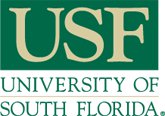Below is a summary of the abstract you submitted. Presenting author(s) is shown in bold.
If any changes need to be made, you can modify the abstract or change the authors.
You can also download a .docx version of this abstract.
If there are any problems, please email Dan at dar78@pitt.edu and he'll take care of them!
This abstract was last modified on March 16, 2021 at 3:31 p.m..

Mycobacterium phage Girr is an F1 cluster temperate phage with a genome length of 57754 base pairs. This bacteriophage is morphologically siphoviridae with 103 genes and was isolated in Mycobacterium smegmatis. Gene 7 is a structural gene with the function of head-to-tail adaptor which helps to make up the neck of the phage and connect the head and tail. This gene has no conserved domains or transmembrane domains found. HHpred confirms function hitting to another head-to-tail bacteriophage with a probability of 99.24, evalue of 2.3e-10, and query coverage of 87.77%. In analysis of research done on Gene 7 within phage Girr, the goal is to determine whether or not this gene holds toxic or defense utility in its host. To begin, a Polymerase Chain Reaction (PCR) was done to amplify the gene. Gel electrophoresis was then done confirming Gene 7 had been successfully amplified but with additional bands present. The band for Gene 7 was then physically removed from the gel sample and purified from there. Once purified, isothermal assembly was performed to clone the previously amplified DNA fragment into a pExTra linear plasmid. This backbone contains a Kanamycin antibiotic gene, two origins of replication (one M. smegmatis and the other E. coli), Ptet an inducible promoter along with a tet repressor that inhibits Ptet by releasing tetracycline to bind to it to prevent any leaking of expression, and lastly an mCherry reporter that after Ptet has been expressed produces a red protein validating it. After the insertion into pExTra, Gene 7 was transformed into M. smegmatis via electroporation so that the plasmid could be replicated in high quantities. Finally, using the transformed M. smegmatis colonies, both a cytotoxicity assay and an immunity assay were completed to determine if Gene 7 expressed toxicity on M. smegmatis or protected M. smegmatis from phage infection, respectively. During the cytotoxicity assay the transformed M. smegmatis cells are spotted on plates containing different concentrations of aTc, an antibiotic. When compared to a positive and negative control (Fruitloop gp52 and Fruitloop gp52-170S) on different levels of aTc plates, there were no signs of toxicity present. The immunity assay used the sample colonies plating on 7h10 Kan10 plates with and without aTc in comparison with phage Larva. After comparison of the plates, there were no differences pointing to a lack of immunity in Gene 7. These negative results are not conclusive in whether or not Gene 7 may actually me toxic or not as it may require protein-protein interaction with one or more other genes in the phage Girr, there may have been a mutation, or it may require higher protein concentrations in order to be expressed, to which further research could be conducted to determine. We thank Danielle Heller, Vic Sivanathan and the SEA GENES team for support of this project.

